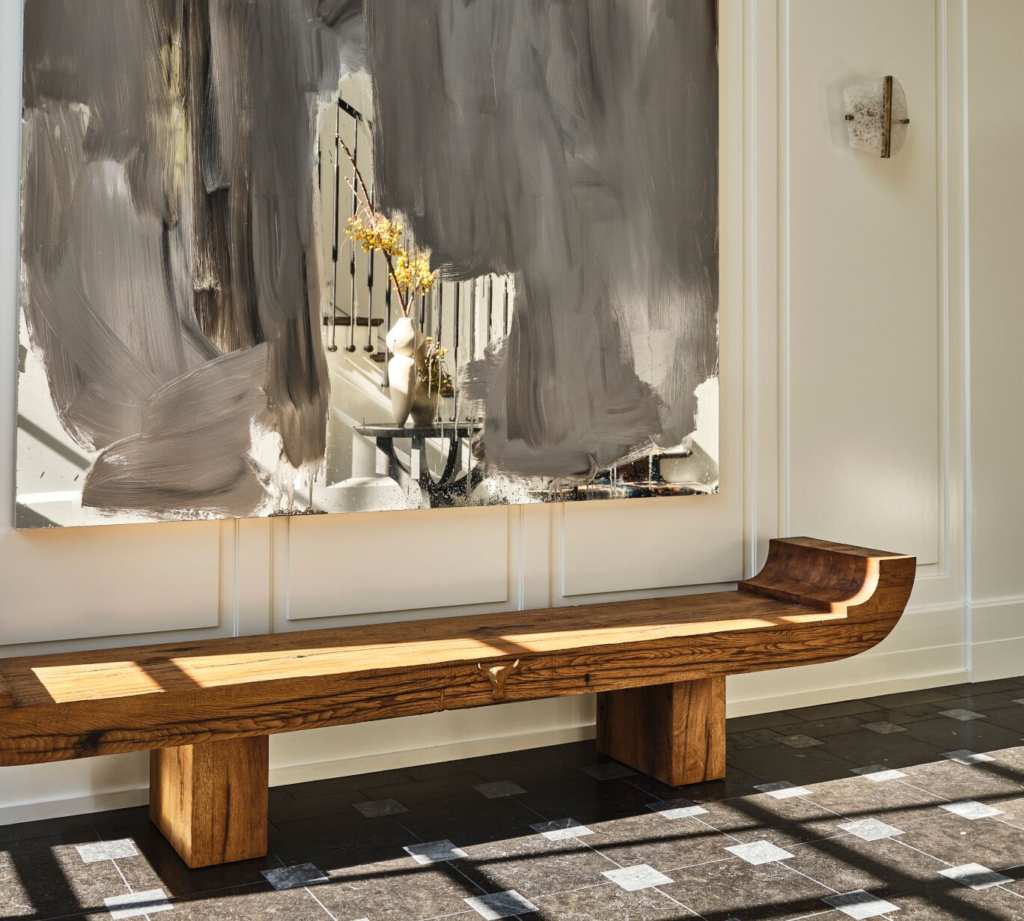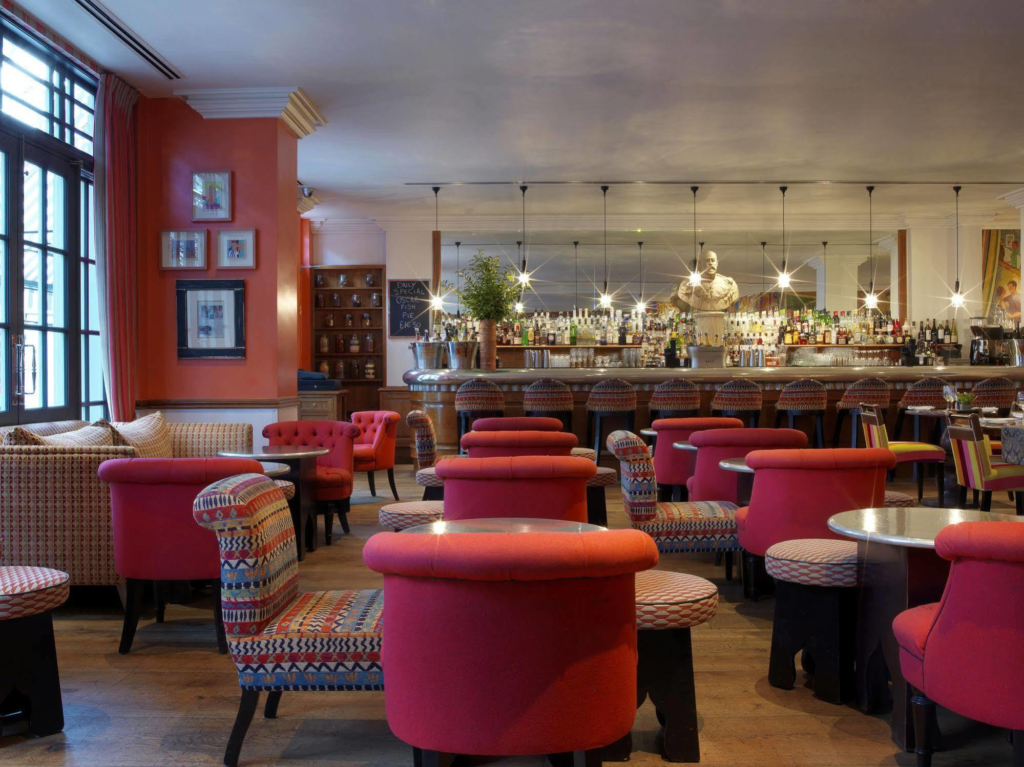What do you think hospitality interiors will look like in 2024?
In the dynamic hospitality industry, the art of interior design is pivotal. It’s not just about aesthetics; it’s about creating an experience. This guide demystifies design principles that define the essence of boutique hotels and chic eateries. It’s a journey for both the experienced and the uninitiated, offering insights to transform any space into a magnetic haven for guests.

NEW TREND
We will be seeing more wallpaper and even textiles on the walls and fabric drapes – slightly more fantastical and whimsical but all designed to make venues cozy and soft and full of lovely corners to get lost in. And extra fabric and drapes are also great for acoustics to make venues less noisy. Comfort and cool creativity all wrapped up together.
We also predict that hospitality venues (bars, restaurants and hotel lobbies) will be looking to design and refurbish their venues in ways that encourage guests to spend far more dwell time; letting them use certainly ‘all-day’ venue spaces for a hybrid mix of social and work. For us designers, the key will be making them yet more comfortable, inspiring and accessible for people, so that those who choose that venue as their favourite destination find themselves somewhere comfy, stylish and cool to get away from home-working for a change of scene, pace and buzz.
CONNECTING
Interiors will be tapping into the fact that it’s a tough time out there for everyone.
And where there’s a ’need’ like this, good design should facilitate this in creative, inspiring ways. We’ll see increasing numbers of venues learning that it isn’t the thing to be sniffy anymore about people working between their breakfast and brunch – it’s an asset and best to make people feel ultra welcome – as the busier a venue looks, the busier it is, and it creates huge consumer loyalty. And us designers can still create areas of the space which ‘aren’t’ laptop friendly and venues can adopt gentle rules that for 5/6pm laptops should be turning off and people relaxing fully.
Overall, we think there will definitely be a shift towards sharpening up of elegance in hospitality interiors with bold, multi-layered textural palettes and colour schemes, often led by the art rather than just the finishes – which will be exciting to see more of!

Key Elements of Successful Hotel Interior Design
When it comes to hotel interior design, there are several key elements that contribute to creating a successful and captivating space. These elements include:
- Functionality: A well-designed hotel interior should prioritize functionality to ensure a smooth flow and ease of use for guests. This involves carefully planning the layout of spaces such as lobbies, guest rooms, and dining areas to maximize comfort and convenience.
- Comfort: Creating a comfortable atmosphere is essential in providing an enjoyable experience for guests. This can be achieved through the use of soft lighting, plush furnishings, high-quality bedding, and ergonomic seating options throughout the hotel.
- Cohesive Theme: Establishing a cohesive theme or design concept helps create a unified look and feel throughout the entire space. Whether it’s modern minimalism or classic elegance, consistency in color palettes, furniture styles, artwork selections, and other decorative elements can enhance visual appeal while making guests feel immersed in the overall ambiance.

Designing for Distinction: Boutique Hotel Interiors
Boutique hotels stand out in the hospitality industry for their unique and captivating interior design. With careful attention to detail, these hotels create spaces that leave a lasting impression on their guests. Here are some key considerations when designing boutique hotel interiors:

- Thematic Cohesion: A defining characteristic of boutique hotels is the strong thematic cohesion throughout the space. Every element, from furniture to artwork, should reflect a common theme or concept. This creates a sense of harmony and an immersive experience for guests.
- Luxury: Boutique hotels aim to provide luxury and comfort beyond what traditional chain hotels offer. This can be achieved through high-quality materials, plush furnishings, and personalized amenities like spa treatments or private gardens.
- Attention to Detail: One of the hallmarks of boutique hotel interiors is the meticulous attention paid to even the smallest details. From ornate chandeliers to unique wall textures, every element contributes to an overall ambiance that delights and surprises guests.
- Daring: Be bold and take risks.

Charlotte Street Hotel
By incorporating these elements into their designs, interior designers can create distinct and unforgettable experiences for visitors at boutique hotels.
We love everything that interior designer Kelly Whearstler does in design – she is a true original and inspiration – so we keep an eye on her new hotel, restaurant and residential project launches. This year’s Grotto at Santa Monica Proper Hotel is billed as a cove-esque library and art gallery – but to be honest nearly all of Kelly’s interiors feel like a celebration of art in design.
Everywhere you look there is either an amazingly curated mix of art, objects and breathtaking artistic features. The wall mural in the lobby of the Downtown L.A. Proper Hotel (pictured above) is unbelievable, complemented by the gorgeous credenza joinery piece, wall panelling and quirky positioning of the framed art. We love the fact that Kelly influences her clients to be bold, brave and more edgy than most. Long may she reign.
Banner and featured image: Larry’s Bar interiors at the National Portrait Gallery, designed by Run for the Hills



